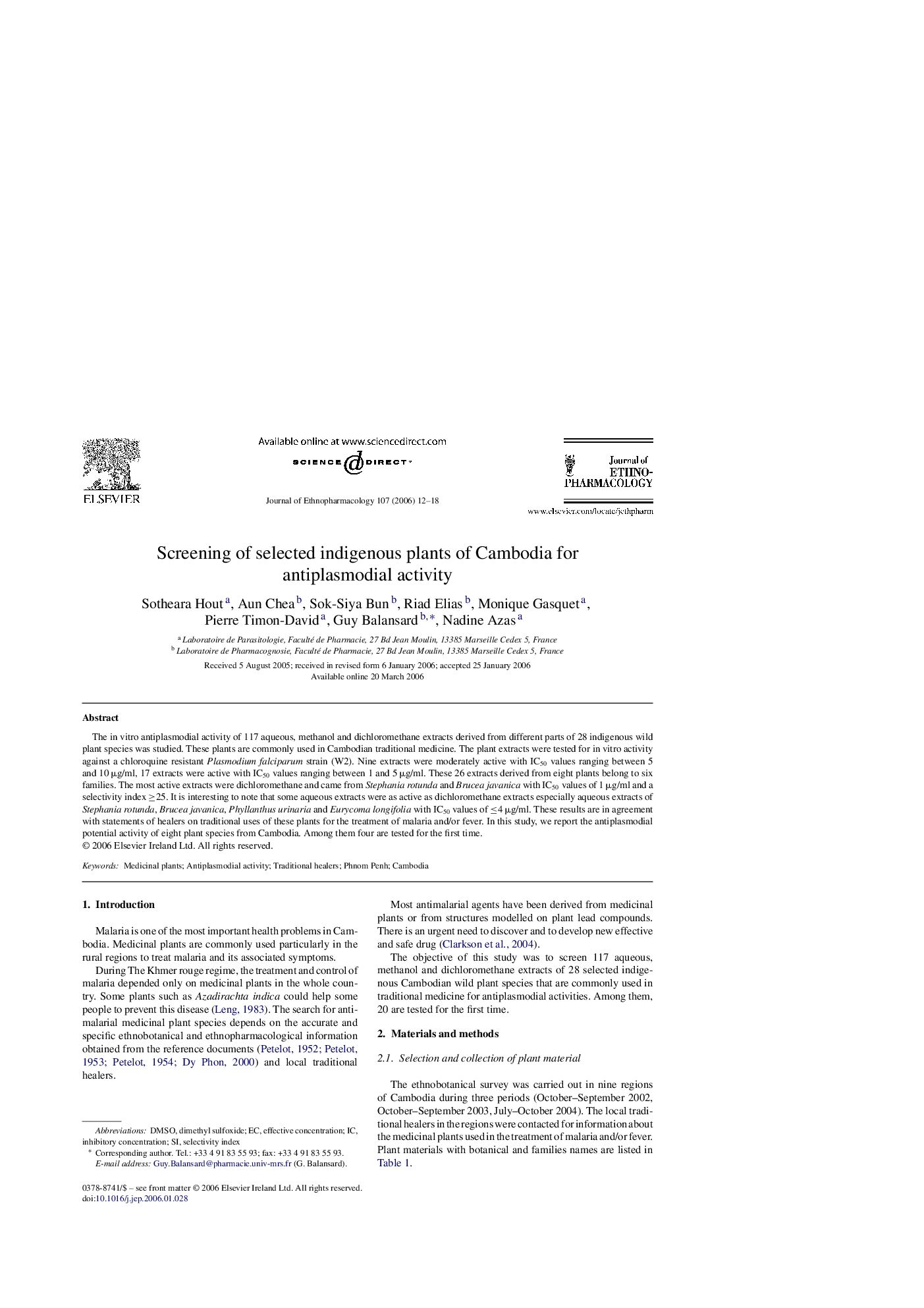| کد مقاله | کد نشریه | سال انتشار | مقاله انگلیسی | نسخه تمام متن |
|---|---|---|---|---|
| 2547698 | 1124066 | 2006 | 7 صفحه PDF | دانلود رایگان |

The in vitro antiplasmodial activity of 117 aqueous, methanol and dichloromethane extracts derived from different parts of 28 indigenous wild plant species was studied. These plants are commonly used in Cambodian traditional medicine. The plant extracts were tested for in vitro activity against a chloroquine resistant Plasmodium falciparum strain (W2). Nine extracts were moderately active with IC50 values ranging between 5 and 10 μg/ml, 17 extracts were active with IC50 values ranging between 1 and 5 μg/ml. These 26 extracts derived from eight plants belong to six families. The most active extracts were dichloromethane and came from Stephania rotunda and Brucea javanica with IC50 values of 1 μg/ml and a selectivity index ≥25. It is interesting to note that some aqueous extracts were as active as dichloromethane extracts especially aqueous extracts of Stephania rotunda, Brucea javanica, Phyllanthus urinaria and Eurycoma longifolia with IC50 values of ≤4 μg/ml. These results are in agreement with statements of healers on traditional uses of these plants for the treatment of malaria and/or fever. In this study, we report the antiplasmodial potential activity of eight plant species from Cambodia. Among them four are tested for the first time.
Journal: Journal of Ethnopharmacology - Volume 107, Issue 1, 11 August 2006, Pages 12–18